As some of you already know, I can get obsessed with crystals and, sometimes involving rather bizarre mixtures which might include a drop or two of hand sanitizer or a bit of nasal spray or a drop of toothache medication. The results are rarely predictable. However, over the years, I have managed to discover rare, alien birds, butterflies, an elephant, a goat, a rocking horse, and various quasi-humanoid monsters.
Images that provide this sort of entertainment for us are much more revealing than Rohrschach tests and also challenge the powers of our creative associationism. However, there have to be some rules. At least 10 other people have to read your title for or description of the image and say that they can also see it. However, they are free to propose alternative titles or descriptions which, of course, will be wrong if they differ from mine, even if they have 127 other people who agree with them. As it happens, and fairly frequently at that, I can have a particular association with an image and have a friend look at it and say that it suggests something different to him or her and indeed, I can often understand how that might be and this can happen multiple times with the same image.
Some few images are so distinctive that they brook no disagreement as is the case with my favorite elephant composed of Ferric Ammonium Sulfate.
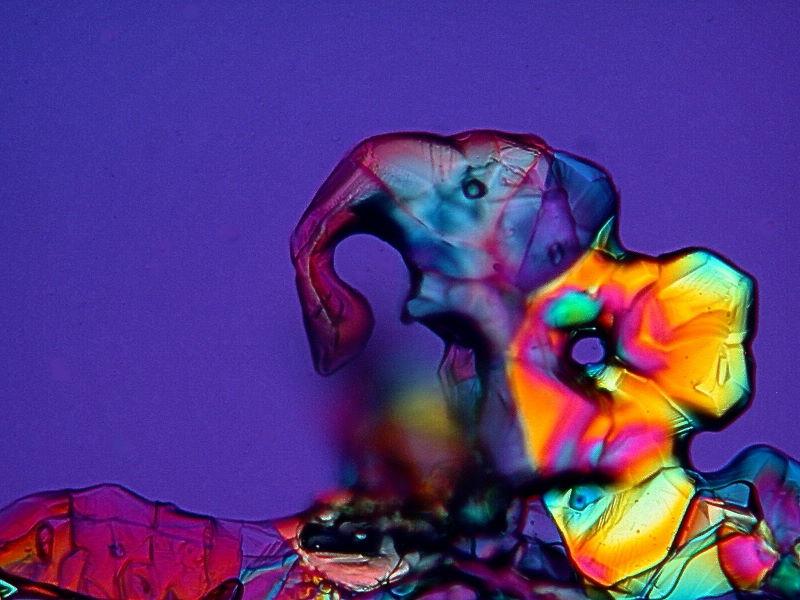
Another unambiguous case is the image which I call an egret or a heron and it’s no good arguing about which is more accurate since biologically egrets are herons.
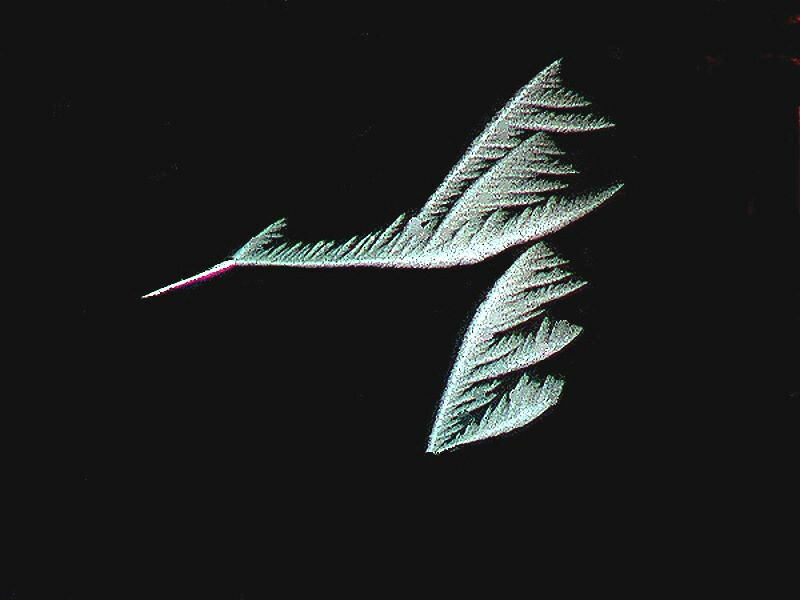
Composition: Bromoselzer, Water Glass (Sodium Silicate), and the biological stain Alizarin Red S. Bromoseltzer was finally banned because of the bad effects of the bromide salts in it. I was given an old bottle by a fellow microscopist. Water Glass used to be used as an egg preservative.
I’ll show you another very clear example, one of my favorites, a rocking horse. What child wouldn’t want one of these?
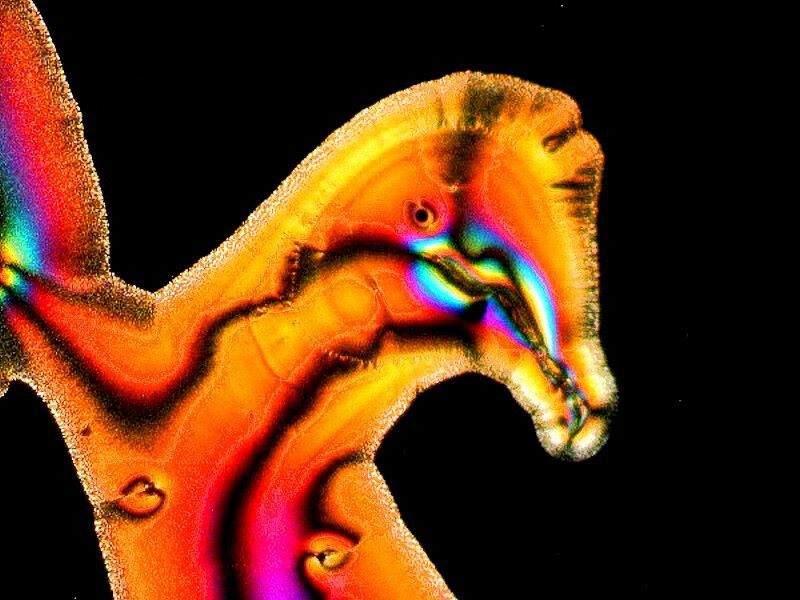
Composition: Anbesol (toothache medication), Boric Acid (eyewash among other things) and Stevia (an all natural sweetener).
Now, from here on, the images become more ambiguous, but these next 2 are pretty straightforward. My wife is inclined to think that looks like a goat, whereas I lean toward its being a dog.
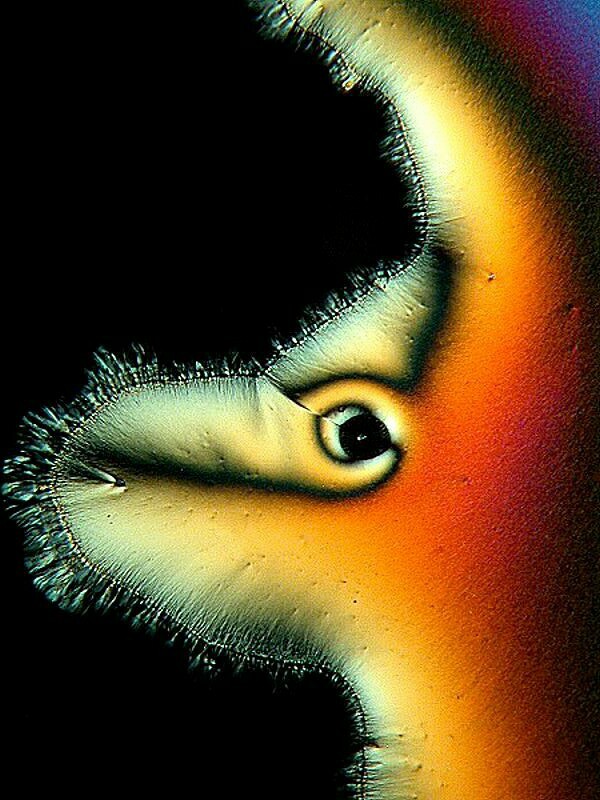
Composition: Ascorbic Acid and the biological stain Methylene Blue.
And then there is the nudibranch or “nudi” as the specialists like to call them. This crystal one is, I think, quite striking but some of the real ones are among the most beautiful creatures on the planet. First, I’ll show you my crystal nudibranch and this is a link to the flesh-and-blood ones.
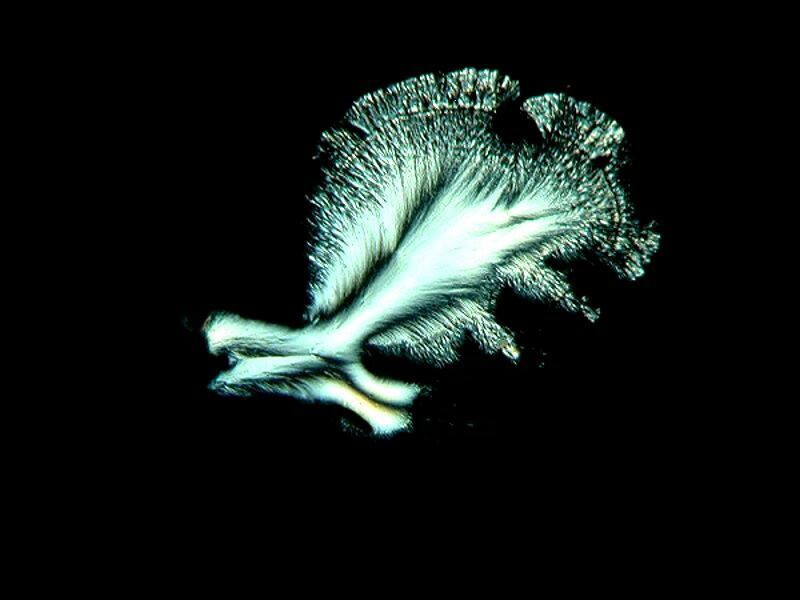
Composition: Ascorbic Acid (Vitamin C) and the biological stain Malachite Green.
Another recognizable one is a very ferocious looking fish which is wonderfully colorful but, nonetheless, I wouldn’t want to swim into one.
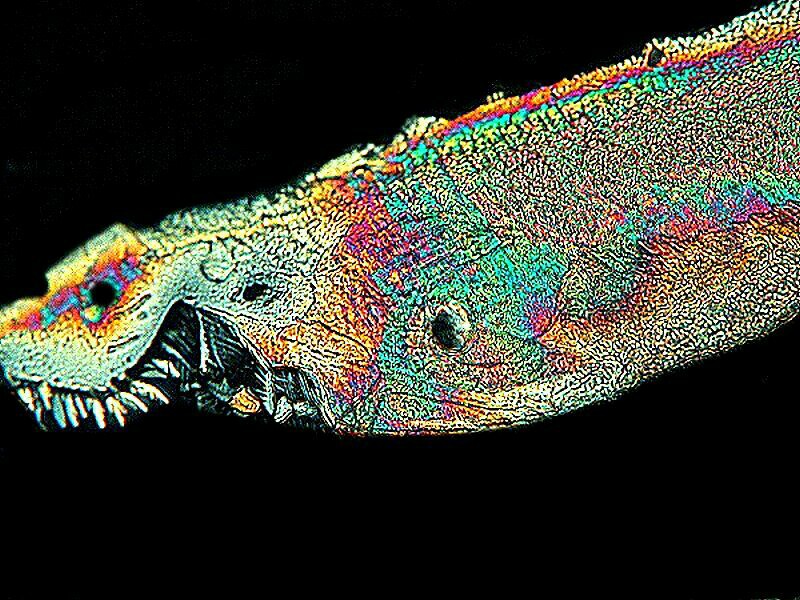
Composition: Anebsol and Sodium Silicate.
And, of course, what bestiary would be complete without a worm? This is not a very distinguished looking worm but, nonetheless, distinctly wormish.
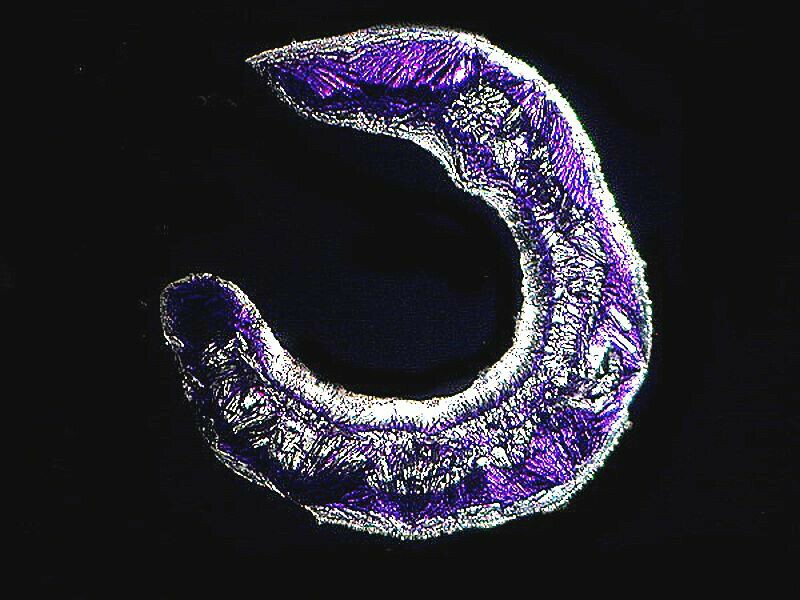
Composition: Ascorbic Acid and the biological stain Gentian Violet.
However, all is not lost wormwise; although this next one is a bit more fanciful, it is quite colorful and lovingly fuzzy with all those bristles.
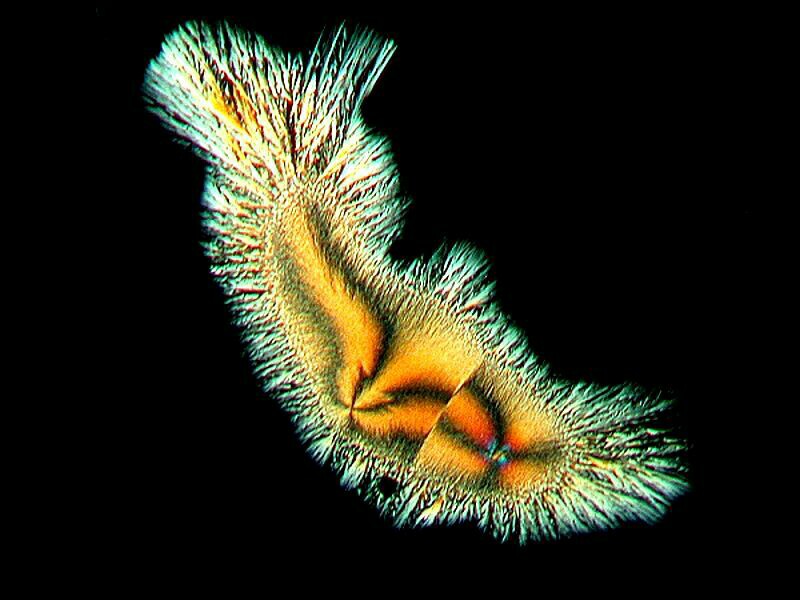
Composition: Anbesol and Sodium Silicate.
Then, there are birds, for we must have birds to eat the worms and, of course, we need exotic, colorful, frilly-freathered birds to hunt down the fuzzy worms.
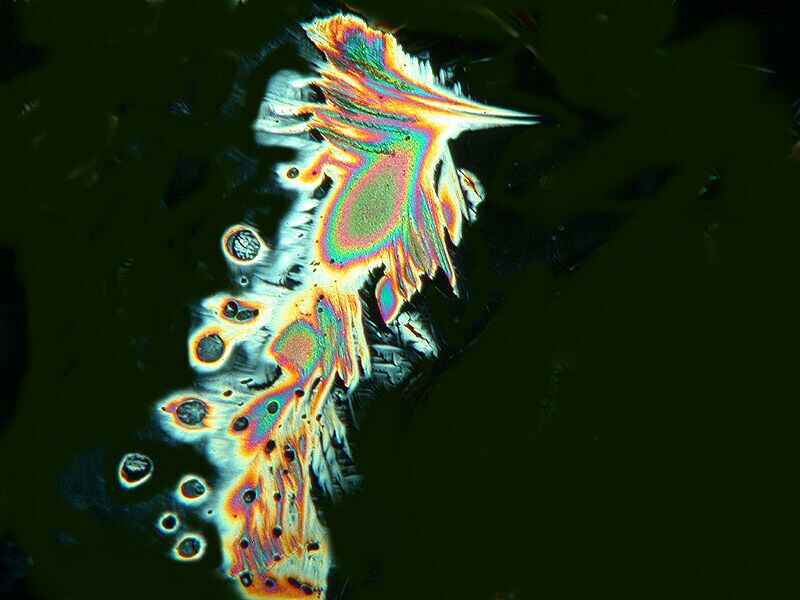
Composition: A complicated mixture to get this one. Magnesium sulfate, Acetaminophen, Anbesol, and Ascorbic Acid.
Now, I have 3 more crystal “birds”, but they are even more fanciful than the first one.
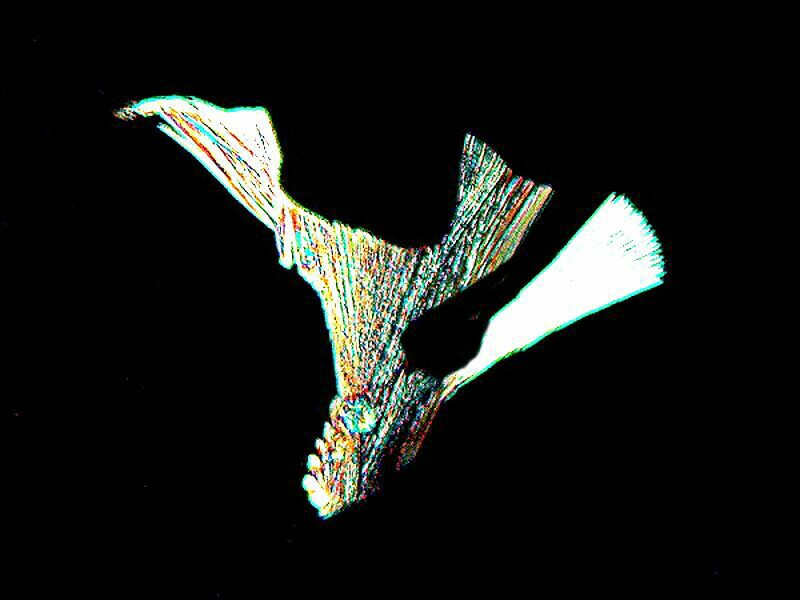
Composition: Alkaseltzer and Ascorbic Acid.
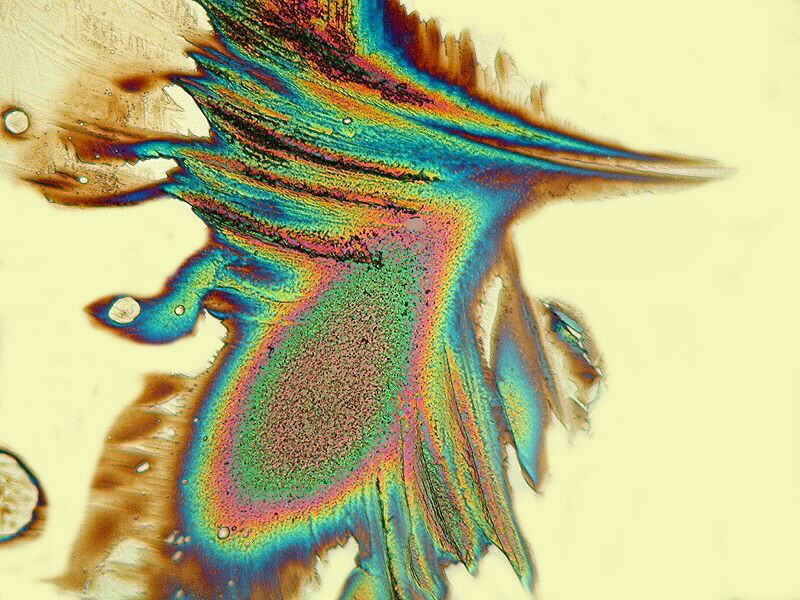
Composition: Magnesium sulfate, Ascorbic Acid, Acetaminophen, and Anebesol.
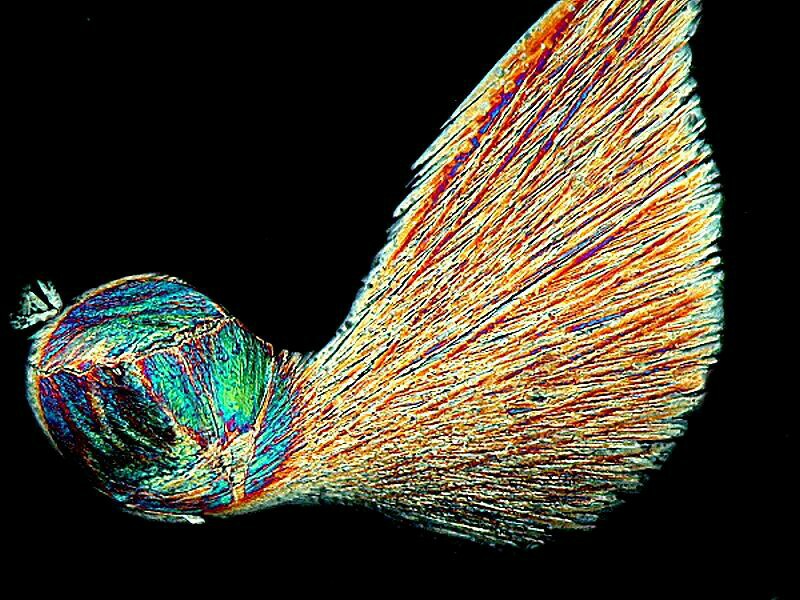
Composition: Alkaseltzer and Ascorbic Acid.
This last one is from the planet Dogymho and is a predator which feeds on politicians.
While we’re in this galaxy of Stoididnastiwtin let’s take a look at some of its other denizens.
To the delight of exobiologists specializing in paleontology, there is a “thunder lizard” to be examined, if one is brave enough.
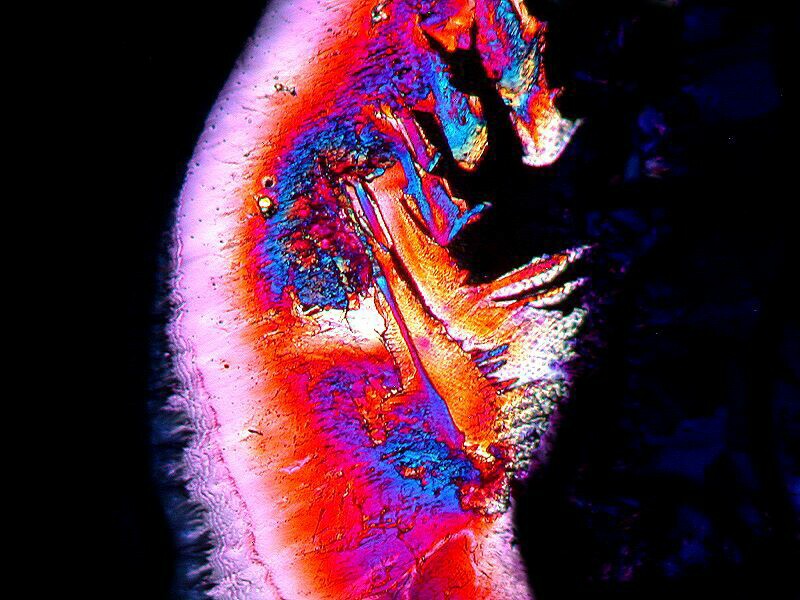
Compostion: Acetaminophen and the biological stain Gentian Violet.
In addition, the giant angry duckasaurus is common there and is notoriously short-tempered.
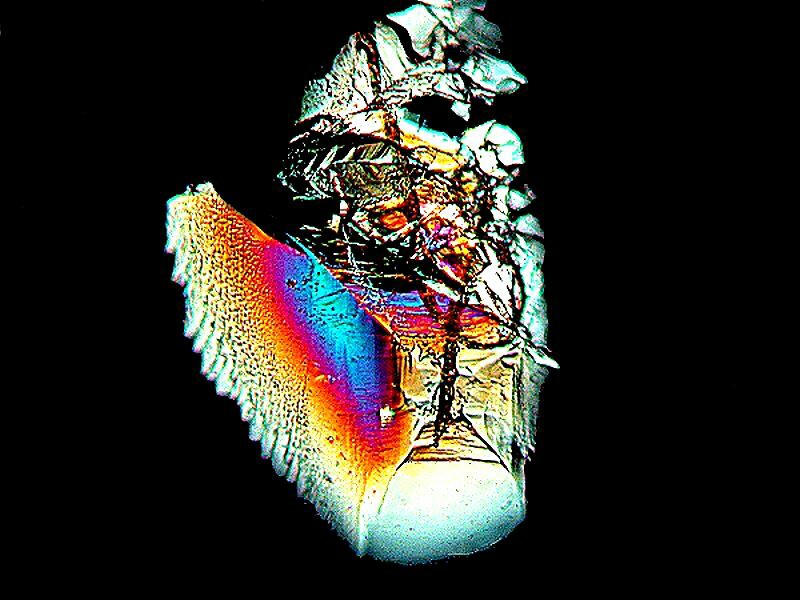
Composition: Rochelle Salts and Isopropyl alcohol.
Also, a strange lizard that looks rather like it was assembled from colorful wooden cutouts.
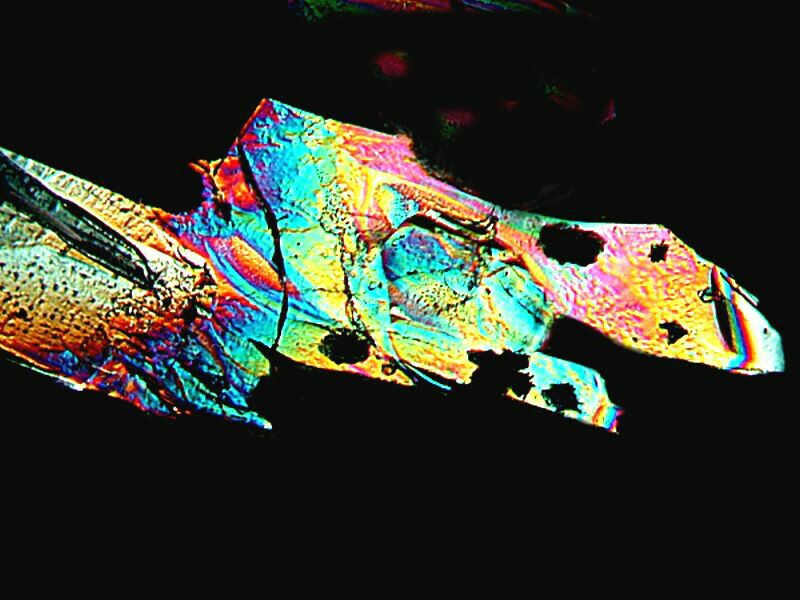
Composition: Acetaminophen and Codeine sulfate. (?)
In one of the oceans, an extraordinarily strange celphalopod is to be found and although it has multiple appendages, the number is uncertain, for it can change from minute to minute.

Composition: Alkaseltzer and Plant Food. (?)
A terrifying pre-hominid is located on the planet Llehehttahw in the system Eraewerrehwwonktnodi. It is reputed to be able to kill with a scream from its hideous face.
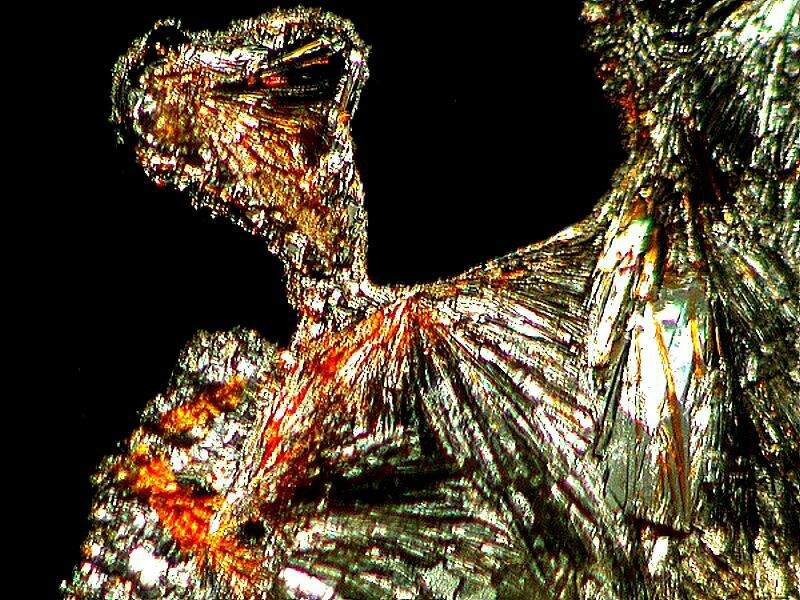
Composition: Ascorbic Acid and the biological stain Orange G.
In the oceans here, one can find an interesting creature that looks rather like a cross between a skate and a sting ray.
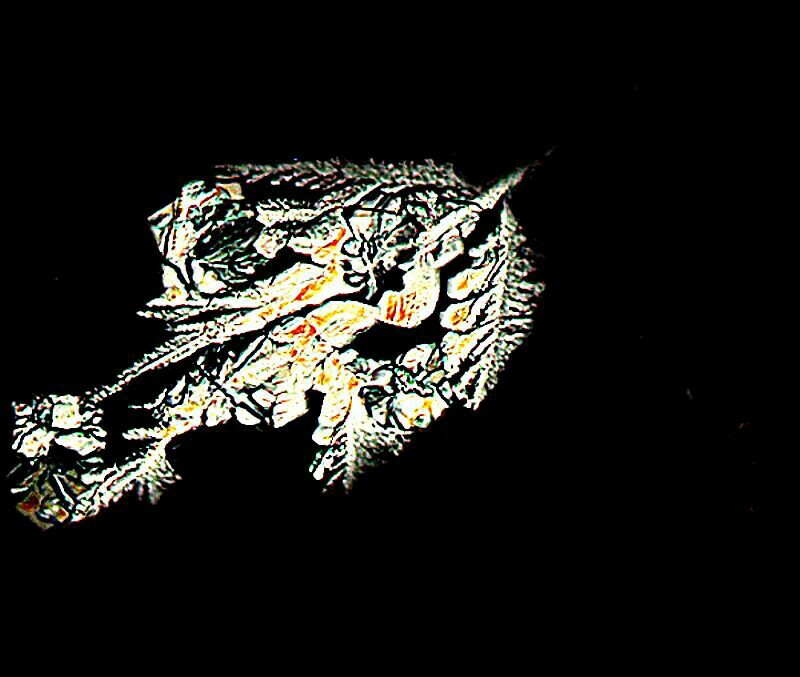
Composition: Alkaseltzer, Magnesium chloride, and Plant Food.
In terms of fearsome, there are few creatures which can rival the crocodilian from the planet Efilylgu and they are reputed to infest virtually every waterway.
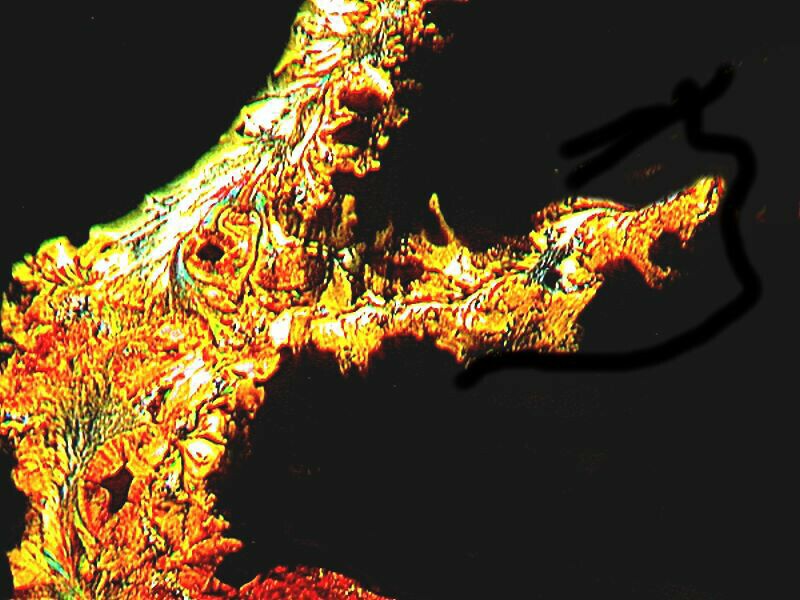
Composition: Acetaminophen and the fluorochrome Acridine Orange.
Efilylgu also has a very cute creature that looks quite like a bunny rabbit, but unfortunately I was only able to get an image of its head from behind showing its long ears. Sadly, it has a vicious nature and is possessed of a deadly venom
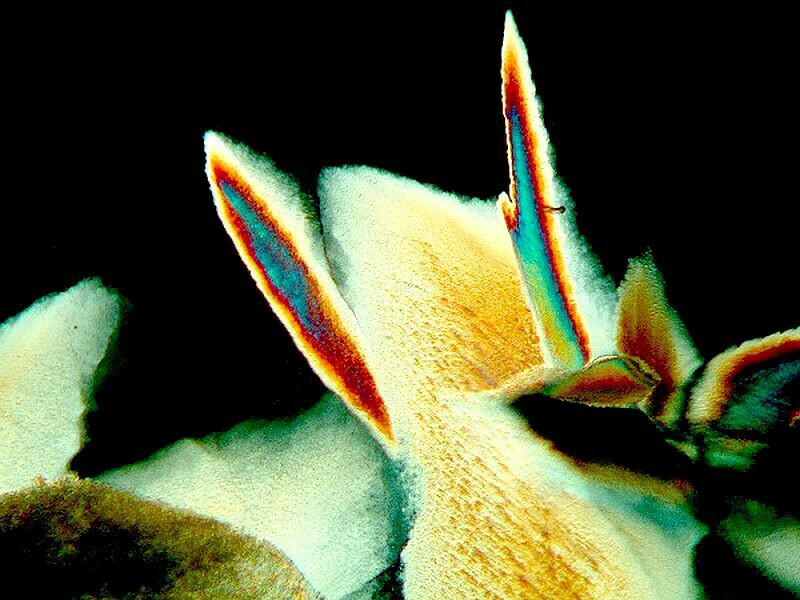
Composition: Ascorbic Acid, Nickel sulfate, and Bromoseltzer.
A redeeming organism is a many-winged lepidopteran with exceptionally lovely colors.
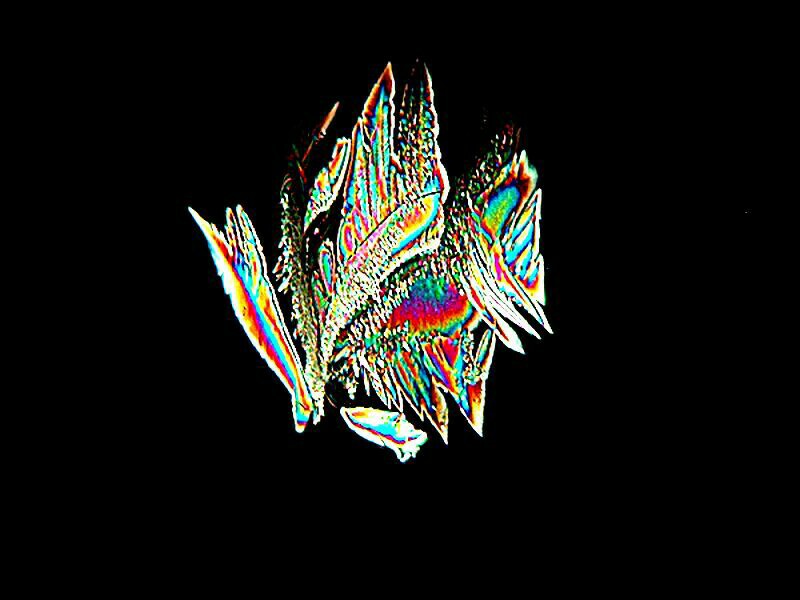
Composition: Ascorbic Acid (from a Vitamin C tablet). (?)
As one would expect, the plant life on these planets is also fair strange (as the Elizabethans might say). Below is an image of a Nettlegrasper. It sways in the breeze and has both sticky and stinging cells which it uses to capture small airborne creatures and then digest them in order to grow even more elaborate branching nets.
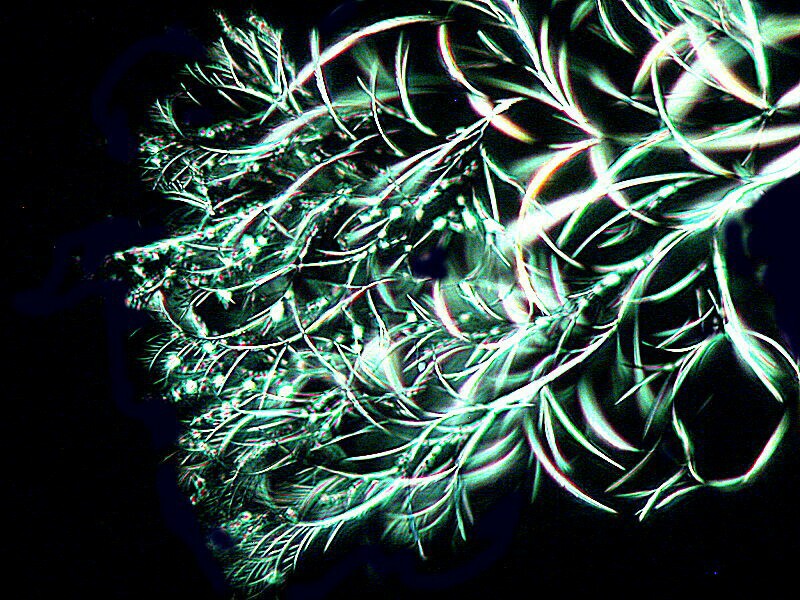
Composition: Magnesium sulfate and Isopropyl alcohol.
There is also the Heliospinner whose seeds can travel great distances at incredible speeds. Once it settles and takes root it produces, in just a matter of months, a tree-like entity which dwarfs our sequoias. Here is an image of one of the seeds.
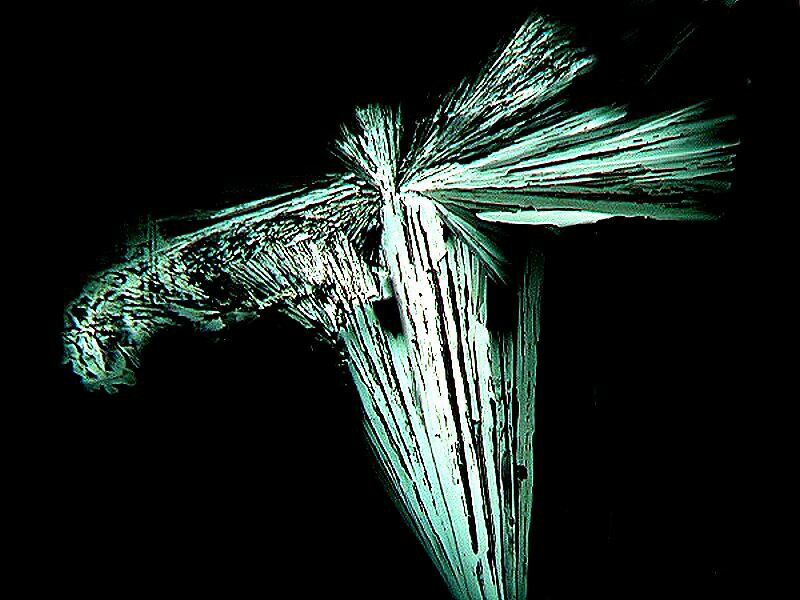
Composition: Magnesium sulfate and Isopropyl alcohol.
In conclusion, a quick glance at the crystalline micro-life. First, a quite lovely algal form which can serve as a home for many kinds of micro-life.
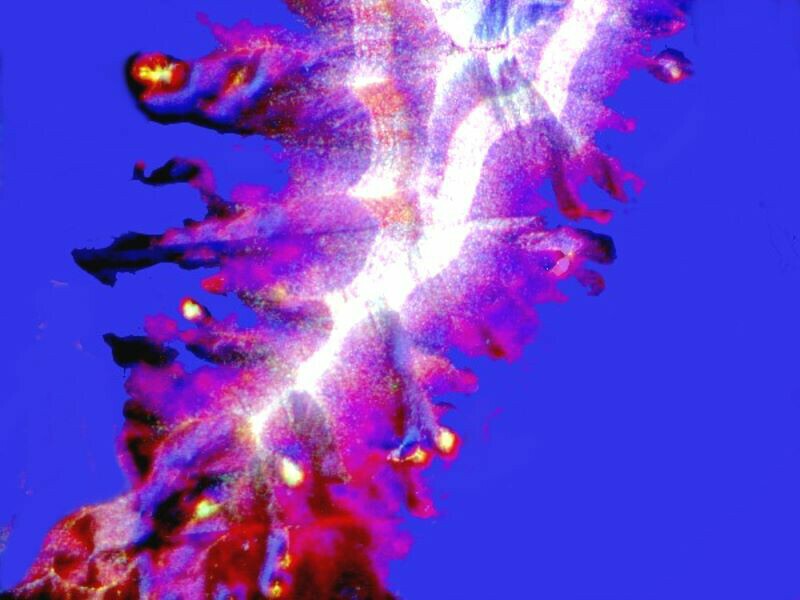
Composition: Ascorbic Acid, Acridine Orange, and Methylene Blue.
As you can see, there are all kinds of nooks and crannies for many wee, weird beasties to hide in.
In our ponds here on Earth, we have fascinating amoeboid forms called Heliozoans or “sun animalcules”, but none I think quite so colorful as the one below.
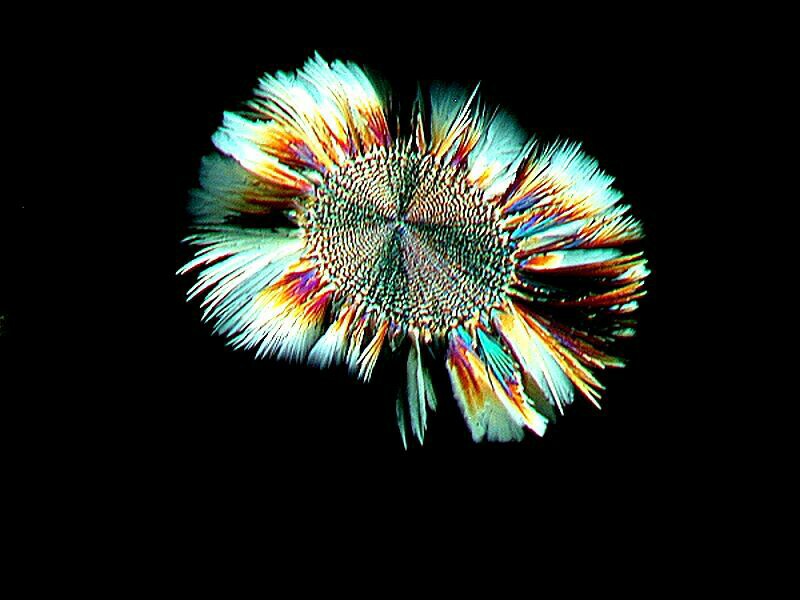
Composition: Magnesium chloride.
Finally, we have a couple of crysto-crypto-ciliates. It is unclear whether we are observing an amorous encounter or a predatory one.
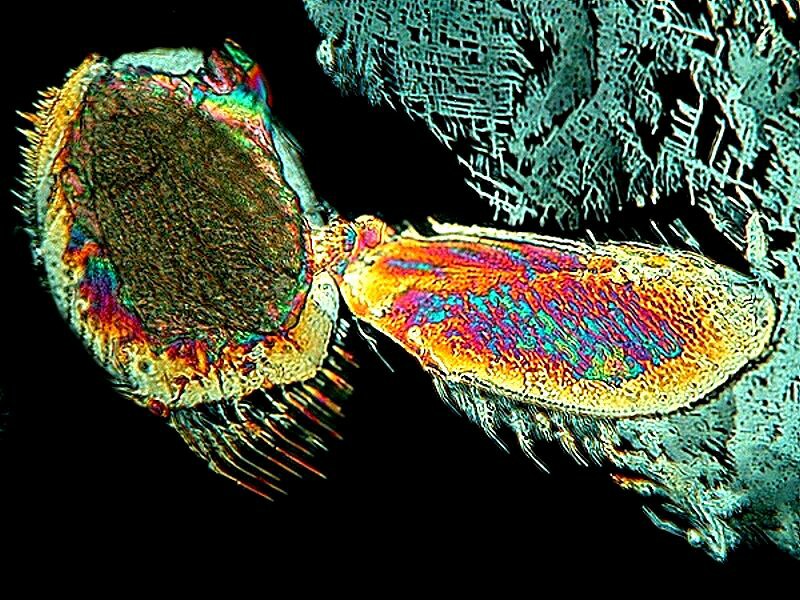
Composition: Anebsol and Sodium silicate.
I hope you will overlook my, at times, overheated imagination and accept the challenge to go into your lab and create lots of wonderfully interesting and/or colorful slides and I wish for you that you may in your experimentations discover some examples that lead to the occasional imaginative excess.
Footnote regarding composition of images.
As you have likely noticed, there are a few images where I have added a question mark in parentheses after the listing. This is because some of these images were taken some years ago when I was still using notebooks to list the camera identification (such as, DSCN0349) and then I would write out a description with other relevant information. Unfortunately, in our recent move to another house, those notebooks disappeared. So, in those instances where I was not certain of the composition, I let you know that by means of the question mark.
All comments to the author Richard Howey are welcomed.
Editor's note: Visit Richard Howey's new website at http://rhowey.googlepages.com/home where he plans to share aspects of his wide interests.
Microscopy UK Front
Page
Micscape
Magazine
Article
Library
© Microscopy UK or their contributors.
Published in the October 2020 edition of Micscape Magazine.
Please report any Web problems or offer general comments to the Micscape Editor .
Micscape is the on-line monthly magazine of the Microscopy UK website at Microscopy-UK .
©
Onview.net Ltd, Microscopy-UK, and all contributors 1995
onwards. All rights reserved.
Main site is at
www.microscopy-uk.org.uk .